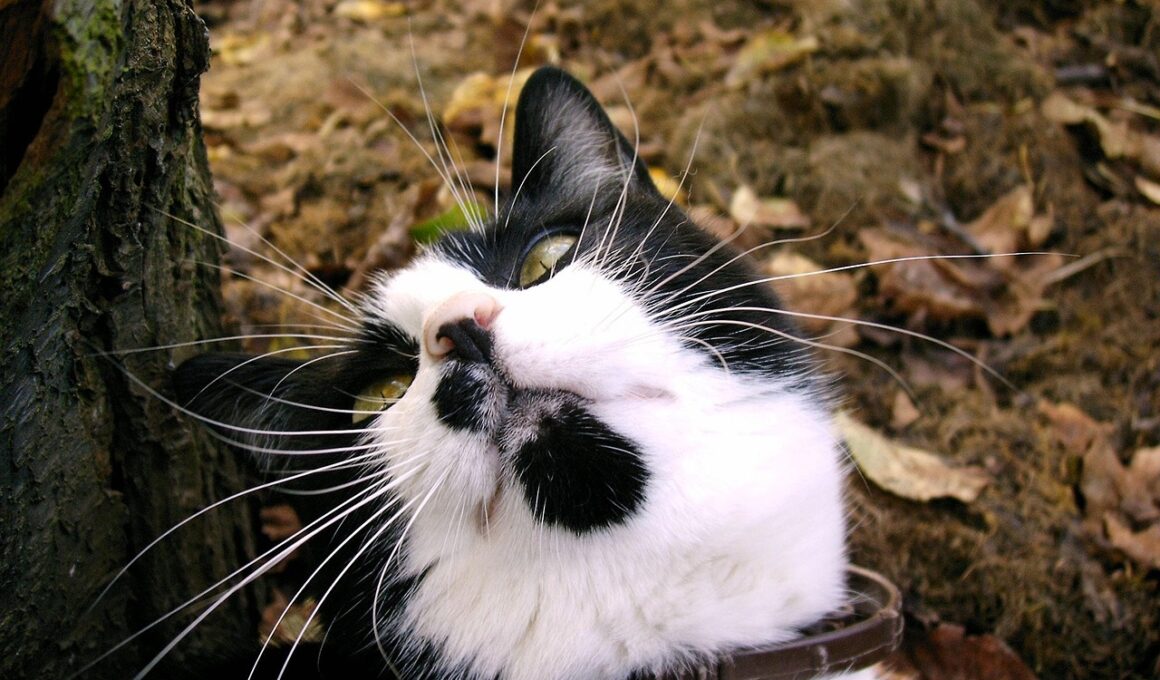Setting Up a Safe Environment for Chin Target Training
Creating a safe environment for chin target training is essential for both the trainer and the cat. Start by choosing a quiet room where distractions will be minimal. Make sure this room is free of hazards such as sharp objects or open windows that could lead to an escape. The training area should be well-lit. Natural daylight is ideal but artificial lighting can also work effectively. Remember to have all your training equipment prepared before the session begins. Utilize a chin target specifically designed for cats, as this will help in guiding the cat’s attention. Be patient and reward your cat with positive reinforcement. Treats can enhance the learning experience. Additionally, always monitor your cat’s behavior; if your pet shows signs of stress or anxiety, take a break and try again later. This ensures that your cat remains comfortable and builds trust in the process. Always end training sessions on a positive note. Doing so will enable your cat to associate the training with fun and rewards. Over time, this will contribute to successful chin targeting results.
Incorporating the right equipment is instrumental for effective chin target training. Choose an appropriate chin target that is visually appealing and engaging for your feline friend. This could be a simple stick with a ball at the end or a more complex device that translates motion into visuals. When setting up, make sure that the chin target is at a comfortable height for your cat. Moreover, consider using a clicker or sound device as part of your training setup. This sound will help your cat associate the clicking noise with a reward. When your cat interacts positively with the chin target, make use of the clicker. Once they become accustomed to this connection, it will ease their learning curve greatly. Don’t forget to include treats or their favorite toys as reward mechanisms. Repeatedly offering rewards during training sessions can significantly boost motivation. To help your cat learn, maintain consistency. This will ensure they understand what is expected of them. Training should be a fun experience, not a stressful obligation for either party involved.
Maximizing Comfort During Training Sessions
Comfort plays a crucial role in successful chin target training. Always ensure that the area where training occurs is comfortable for your cat. Soft bedding or mats can make a world of difference. Cats thrive in environments where they feel safe and secure. Pay attention to the temperature and avoid extreme heat or cold. Also, keep an eye out for irritating noises, such as loud appliances or barking dogs outside. Additionally, don’t hesitate to include privacy measures if you have other pets or children. Allowing your cat a space that feels personal can enhance focus. Shadowing is often beneficial, so consider having your cat’s favorite person nearby to act as a source of reassurance. Likewise, limit the duration of each training session. Short, focused periods of training, around 10-15 minutes, are often more effective than lengthy sessions. After all, engaging your cat’s attention for brief intervals is usually better than pushing them to work for longer stretches. End each session positively so the cat looks forward to the next training opportunity.
Adjusting training methods according to your cat’s preferences can significantly increase the effectiveness of chin targeting. Different cats have unique personalities and learning styles, so be observant. Some cats may require more encouragement, while others may quickly pick up new skills. Begin with basic commands to offer a sense of familiarity. Watch how your cat responds to different training techniques and adapt accordingly. Reinforce the positive actions with treats or verbal praise, such as saying, “Good job!” This kind of feedback will strengthen the bond you are nurturing during training. Furthermore, remember that each cat is an individual. Don’t compare progress with another cat; it’s essential to respect their unique journey. For instance, while some may excel at chin targeting in days, others may take weeks. Track your cat’s progress by noting their accomplishments. This not only guides future training decisions but also highlights areas needing refinement. Lastly, comfort is paramount; if your cat seems overwhelmed, step back and reassess. The goal of chin target training is a cooperative, joyful experience.
Tools You Might Need
To effectively execute chin target training, having the right tools is vital. A clicker is recommended as a sound cue that can mark the desired behavior. This encourages your cat to repeat the same behavior to receive a reward. Additionally, a variety of treats is essential. Try to choose soft, small treats that they can consume easily and quickly. Always select the treats your cat loves most; this will help in maintaining their interest and enthusiasm during training. Furthermore, consider using visual markers alongside the chin target. These markers can either be bright colored items or even shiny objects that attract your cat’s attention. Having a comfortable collar can help in identifying your cat during sessions, especially if you work with multiple cats. For reliable measurement of your cat’s progress, utilize a notebook or digital application to note down responses to the training. Make sure to evaluate how well your cat interacts with the equipment and adjust as needed. A well-prepared toolbox allows for better training sessions and enhances the overall learning journey for your beloved feline.
Establishing a routine can significantly improve the chin target training experience. Choose specific times during the day that work best for both you and your cat. Consistency in training times helps your cat anticipate these sessions. It fosters security and helps them adjust better to learning expectations. Additionally, the environment should remain consistent; avoid changing rooms or introducing new distractions during training. Maintain good hygiene in your training space; this reflects positively on your cat’s well-being and readiness to learn effectively. Mixing in playtime between training sessions can also facilitate learning by preventing boredom. Incorporating short fetch-style games will keep your cat excited about lessons. Patience is a prime virtue in cat training. If your cat isn’t catching on, try to identify any barriers they might be facing. Stay flexible and open to making adjustments. Whether changing locations or modifying your method, remain committed to your cat’s comfort and learning style. Ultimately, reinforcing a routine can lead your cat to succeed in chin target training while also establishing a rewarding habit for them. Doing so will enhance both the training and your bond.
Evaluating Progress and Adapting Training
Monitoring your cat’s progress throughout chin target training offers key insights into their development. A quick daily check can indicate how well they are responding to the chin target. Look for consistency in their reactions, noting when they click or touch the target confidently. Also, it’s beneficial to keep track of any patterns in their learning behavior. For instance, do they seem to prefer certain times of the day for training? Diving even deeper, examine what specific skills they may need reinforcement on. This might include revisiting basic commands or employing different techniques until understanding occurs. If a method proves ineffective, be willing to adapt and change strategies. Cats often vary in learning speeds, which is valid; patience is vital during this phase. Celebrate small victories to encourage continual engagement. Consistent feedback goes a long way in establishing a positive atmosphere. Re-assess each training session and gauge if adjustments are needed. Completing self-evaluations will allow for more accurately tailored sessions that meet your cat’s unique needs while progressing your goals.
Ultimately, chin target training should be enjoyable for both you and your cat. A crucial aspect is ensuring that the training remains fun and engaging. If your cat senses pressure or frustration, it can lead to disengagement or stress. Strive to create a balance between seriousness and playfulness during sessions; this keeps motivation high. Consider incorporating games related to the chin target, which will make them less formal and more fun. Using toys that activate your cat’s instincts can also add to the excitement. Positive and healthy interaction is the foundation of success. As the training progresses, always acknowledge your cat’s achievements. Celebrate milestones together, whether through treats or a special playtime. Engaging your pet in this way fosters a deeper bond and lays the groundwork for future sessions. Remember, each cat learns at their own pace, so remain patient and flexible. End every session on a high note to cultivate ongoing enthusiasm. Maintaining a light-hearted atmosphere will lead to profound learning experiences. Instilling good habits and approaches early on ensures a lifetime of joy and defending behavior beneficial for your feline.


